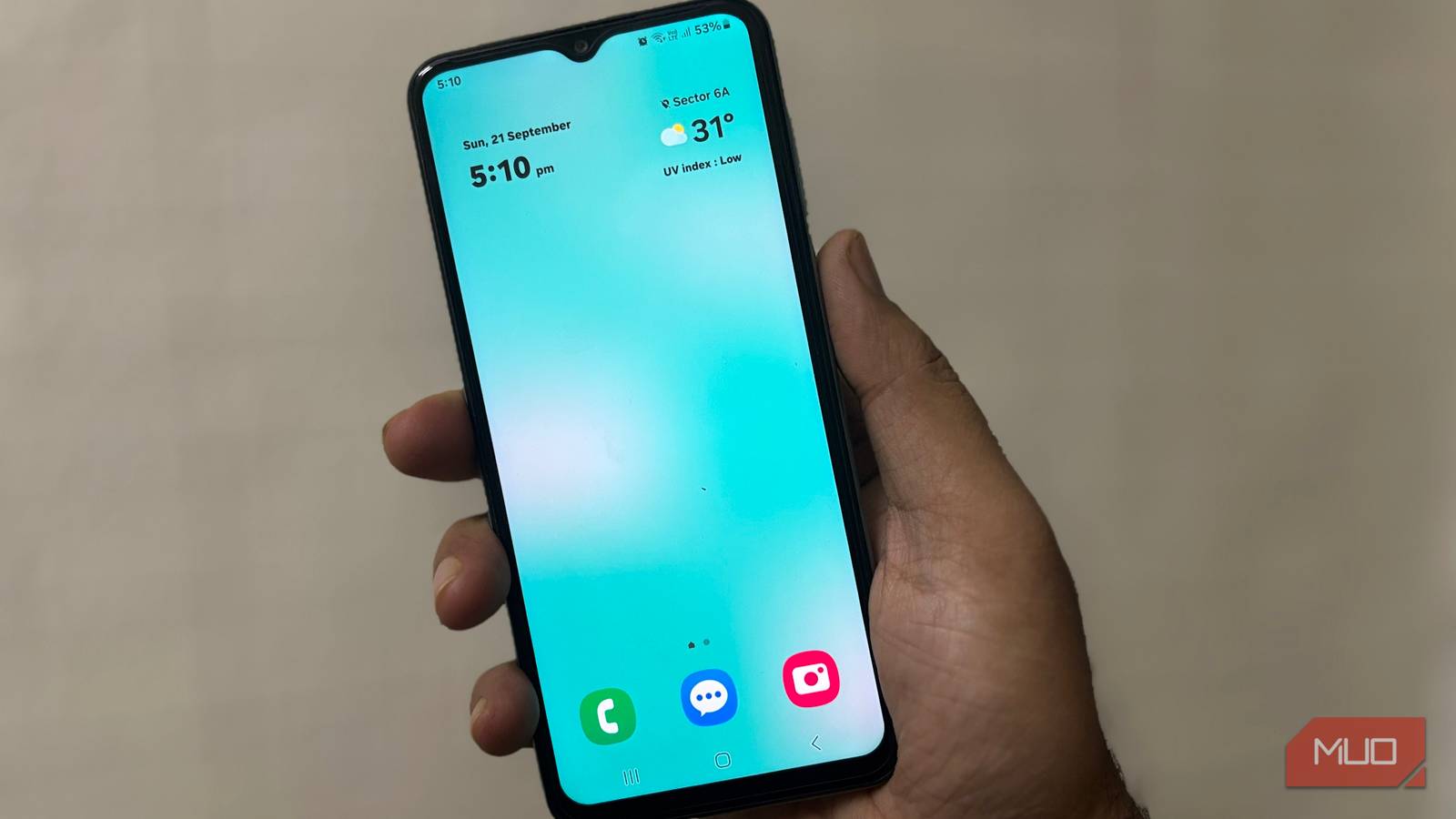Summary
- It’s a palm-sized 1080p projector with Google TV and 150 ANSI lumens of brightness.
- This projector has excellent connectivity, and it’s easy to set up with autofocus and an adjustable tripod.
- Compact size is perfect for light entertainment and presentations on the go.
Kodak needs no introduction — it’s renowned for its quality photography equipment and projectors. That’s why I was thrilled to test the new LUMA 500 Projector, made by licensee C+A Global, which promises the latest features and Google TV OS in a palm-sized package. The other portable projectors I’ve tried this year, like the Yaber T1 Pro and Dangbei Freedo, favor an elongated capsule-like design with an integrated stand, and I wanted to try the smaller LUMA 500 with an adjustable tripod to see how it compares.
The Kodak LUMA 500 is the latest model in the company’s portable projector lineup, with obvious styling cues from our previously tested LUMA 150. It may share similar external features, but performance is on another level, with improved brightness and resolution. It also includes Google TV and built-in streaming apps, making it suitable for light entertainment as well as business-oriented use. I spent a week with the LUMA 500 to see how it performs, and here’s what I think about it.
- Brand
-
Kodak
- Native Resolution
-
1080p
- ANSI Lumens
-
150
- Projection Technology
-
DLP
- Solid construction
- Tiny size
- Easy to setup
- Average picture quality
- Low volume
- Pricey
Price, availability, and specs
Palm-sized performance
Portable projectors are popular because they can go anywhere, and the palm-sized LUMA 500 is a perfect example. At 1.2 lbs and 5.2 x 5.2 x 1.3 inches, it can comfortably fit in most bags and is ideal for road trips and other outdoor use. The square design oozes quality with a tough metal frame featuring a stylish brushed finish. You won’t need to worry about the lens getting scratched or dirty because it’s recessed into the frame and surrounded by a polished square bezel, which adds some flair. The zoom and power buttons, located on the left and right sides of the projector, feature the same brushed finish and have a reassuring tactile feel. Kodak includes a decent port selection on the projector’s rear, consisting of 3.5mm audio, USB-A, HDMI, and a USB-C charging port to connect most devices.
The metal frame is sandwiched on each side with matte black housings. The top includes indicator lights and touch controls for navigating the menu. The bottom has cut-out air vents for effective heat dissipation and standard threads to accept the included tripod stand. Speaking of the stand, it’s compact, yet sturdy, with a locking mechanism to keep the projector pointed at the ideal viewing angle.
Performance-wise, the LUMA 500 uses DLP technology and a 150-ANSI lumen LED light source with a 30,000-hour lifespan.
Performance-wise, the LUMA 500 uses DLP technology and a 150-ANSI lumen LED light source with a 30,000-hour lifespan. It offers 1080p native resolution and 4K support, and can display images up to 150 inches. Audio is courtesy of a pair of 1.5W built-in speakers. Alternatively, you can connect soundbars or external speakers via HDMI ARC, a 3.5mm port, or Bluetooth. For a compact projector, it manages to squeeze in a 10,500 mAh battery, which should last long enough to watch a movie or the big game without needing a power outlet.
- Brand
-
Kodak
- Native Resolution
-
1080p
- ANSI Lumens
-
150
- Projection Technology
-
DLP
- Throw Ratio
-
1.2:1
- Audio
-
2 x 1.5W speakers
- OS
-
Google TV
- Lamp Life
-
30,000 hours
- Mounting Type
-
Tripod
- Image Size
-
up to 150 inches
- Lamp Type
-
LED
- Ports
-
1 x HDMI, 1 x USB-A, 1 x USB-C, 3.5mm audio
- Size
-
5.2 x 5.2 x 1.3 inches
- Power source
-
USB-C
- Battery life
-
Two hours
- Wireless connectivity
-
Bluetooth 5.0, Wirelless 2.4/5GHz
What I liked about the Kodak LUMA 500 projector
Versatile connectivity
Right off the bat, the LUMA 500 feels like a quality product made from durable materials. It’s the smallest portable projector I’ve tried, and I was impressed by the sheer number of features the LUMA 500 packs into its compact size. It fits in the slimmest briefcase, offering 1080p resolution, onboard touch controls, and a built-in battery. The onboard controls stood out for me because of their responsiveness and intuitive layout, and because most larger portable projectors forgo them altogether. That said, most users will prefer the remote control, which has a standard layout with shortcut buttons to YouTube, Netflix, and Amazon Prime.
I appreciate that Kodak goes the extra mile and throws in everything required to get started. Apart from the projector and tripod, the box includes a power adapter with various plug adapters for every region and AAA batteries for the remote control. Setting up the projector was a breeze thanks to its autofocus feature and stable tripod. I could also access my favorite streaming services in just a few minutes with Google TV. Its versatility doesn’t end there; the LUMA 500’s impressive connectivity options mean you can cast content from your phone, connect to streaming services via Wi-Fi, or attach your PlayStation 5 via HDMI.
Setting up the projector was a breeze thanks to its autofocus feature and stable tripod.
A built-in battery is a must-have feature on a portable monitor for business presentations or outdoor movie nights, eliminating the need for a plug point and the hassle of carrying a charging block. Some compact models I’ve tested don’t bother with this feature, and its inclusion on the LUMA 500 is all the more impressive because of the limited space available.
What I didn’t like about the Kodak LUMA 500 projector
Small size sacrifices
The LUMA 500’s diminutive size is a double-edged sword that forces it to make compromises. Its 150 ANSI lumens of brightness are sufficient for dark rooms or nighttime use, but it isn’t the best for brighter environments. The picture quality is decent, but it won’t compete with larger rivals, which have space for more powerful hardware. I had no issues watching shows and YouTube videos, although the muted colors won’t do justice to gaming.
Sound quality is another area affected by the projector’s limited space. The low overall volume is expected, given the tiny speakers, and it will work for presentations and casual viewing. However, you’ll need to add a soundbar or external speaker if you’re looking for a cinematic experience.
However, I don’t think these issues are a big deal because the LUMA 500 isn’t designed for ultimate performance and is all about convenience and practicality, which it delivers in spades.
Should you buy the Kodak LUMA 500 projector?
It depends on how much portability you need
This mini-projector is designed for on-the-go users who want the smallest projector possible to take on the road with them. It easily achieves its objective by offering easy setup and other convenient features in a minuscule package. The solid build quality makes it ideal for long-term use on the road, and it’s versatile to play from nearly any source, including your phone, streaming services, and gaming consoles.
I think the LUMA 500 is worth buying if you’re looking for a solid portable projector with decent performance for light entertainment and business or educational presentations. It isn’t cheap at around $650, and its value will depend on whether you need the ultimate portability and versatility. Better options are available if you’re looking for brilliant sound and visuals, but none of them can match the LUMA 500’s tiny footprint.

- Brand
-
Kodak
- Native Resolution
-
1080p
- ANSI Lumens
-
150
- Projection Technology
-
DLP













